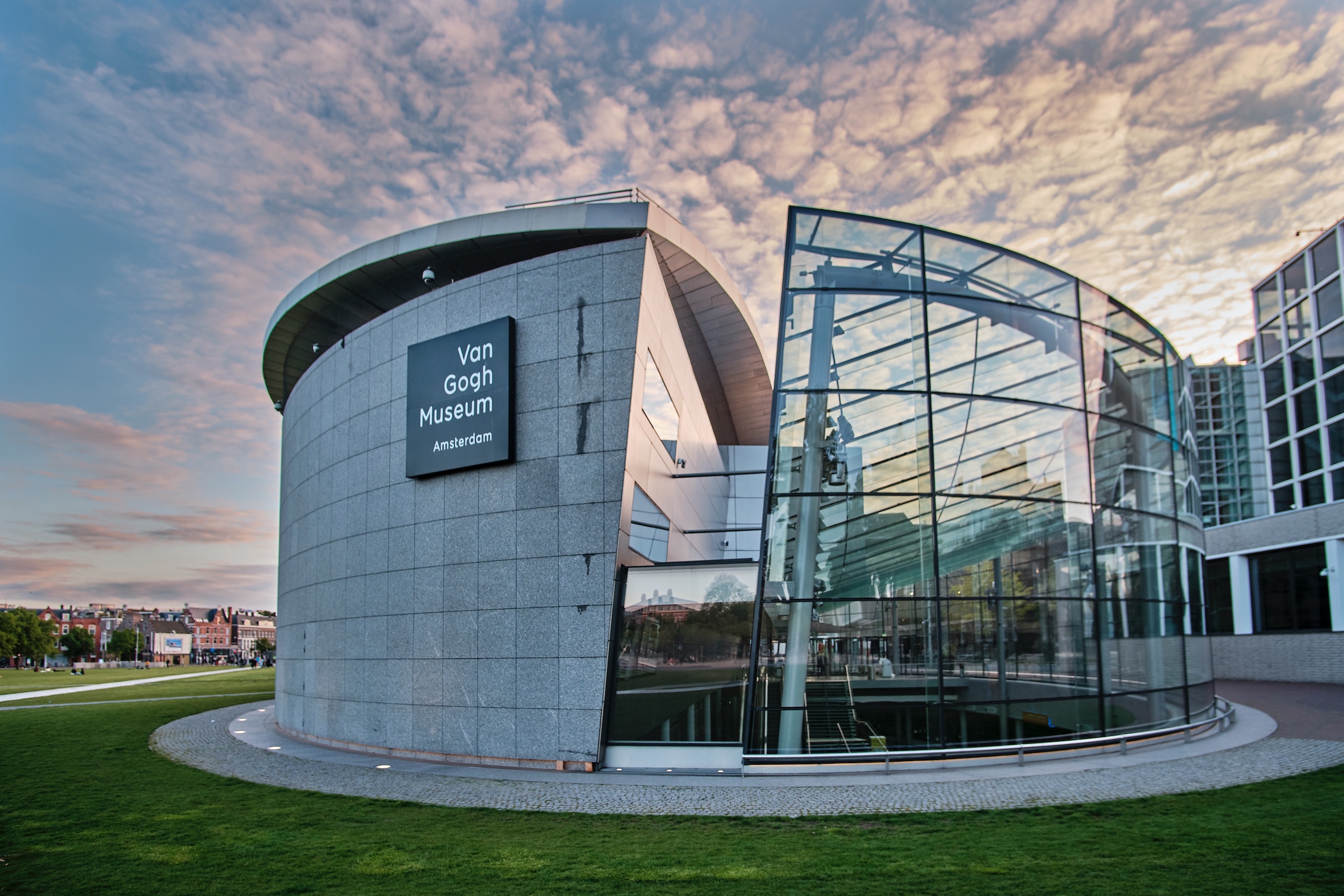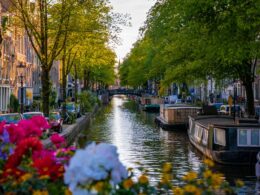Van Gogh is widely considered to be one of the greatest painters of all time. He is incredibly popular and beloved by many around the world. His use of color is magnificent and unparalleled according to art experts. Despite his personal struggles, he was able to turn his pain into beautiful and ecstatic works of art. While it may be easy to express pain through art, Van Gogh used his passion to capture the joy and magnificence of our world.
I have compiled a list of my top ten favorite Van Gogh paintings that can be found in the Van Gogh Museum. These masterpieces offer a deep insight into human emotions, the beauty of nature, and the artist’s personal struggles.
It is good to love many things, for therein lies the true strength, and whosoever loves much performs much, and can accomplish much, and what is done in love is well done.
~ Vincent Van Gogh
The Potato Eaters
Van Gogh intended the Potato Eaters to be a showpiece of his skills as a figure painter. He purposely selected a challenging composition to demonstrate his progress. The painting aimed to portray the harshness of rural life, with the peasants depicted with rugged features and calloused hands.
Van Gogh’s goal was to convey that these individuals had worked hard to earn their meal, having personally laboured in the fields to cultivate the food they were now consuming.
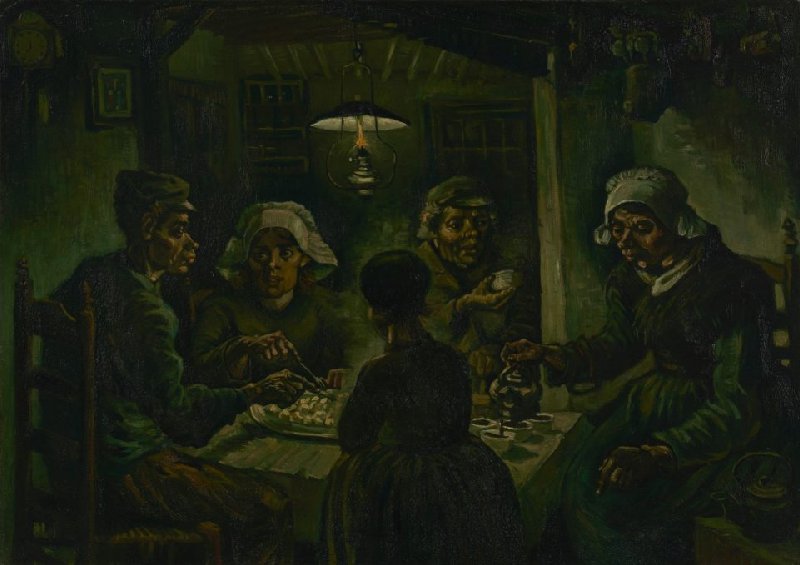
Personally, I find “The Potato Eaters” by Van Gogh incredibly moving. The painting’s raw depiction of hard-working peasants offers a glimpse into rural life’s relentless yet simple rhythm.
Their gnarled hands and weary faces, contrasted with the warm glow of a single lamp, evoke a strange mix of sadness and admiration in me.
It’s as if Van Gogh is inviting us to witness the unadorned reality of these people, celebrating their toil and resilience in an unforgettable way.
Wheatfield with Crows
Van Gogh’s painting, Wheatfield with Crows, is often considered to be his final work, but this is actually a myth. In reality, he created several other pieces after it. While the menacing sky, crows, and dead-end path in the painting are sometimes interpreted as foreshadowing his approaching death, this is not necessarily the case.
Van Gogh intended for his Wheatfield paintings to evoke feelings of sadness and extreme loneliness but also to capture the beauty and fortifying qualities of the countryside.
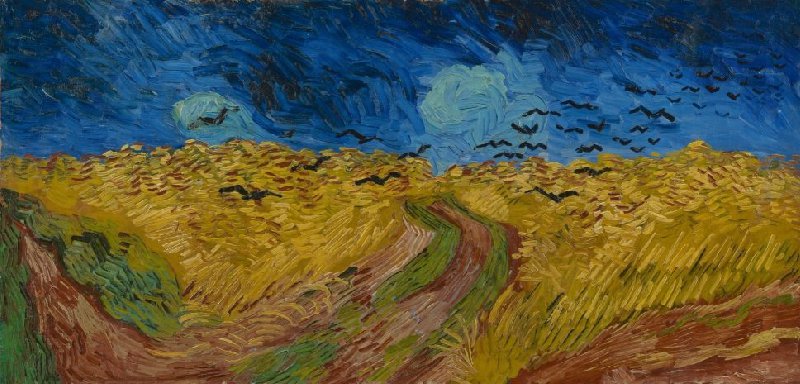
“Wheatfield with Crows” by Van Gogh strikes a deep chord within me. The intense contrast of the golden wheat fields against the stormy sky resonates with life’s own contrasts, its moments of joy and sorrow.
The scattering crows seem to speak of turbulence, yet there’s also a strange tranquillity in the vast open field.
This painting, for me, is like a mirror reflecting life’s complexities and ambiguities. It serves as a reminder that beauty often resides within chaos and that we can find peace even amidst life’s storms.
Sunflowers
Vincent Van Gogh’s Sunflowers paintings are some of his most well-known works. He created them during his time in Arles, located in the southern region of France, between 1888 and 1889.
Van Gogh painted five large canvases depicting sunflowers in a vase with only three shades of yellow, proving that it was possible to convey a vivid image using variations of a single colour without diminishing its expressive power.
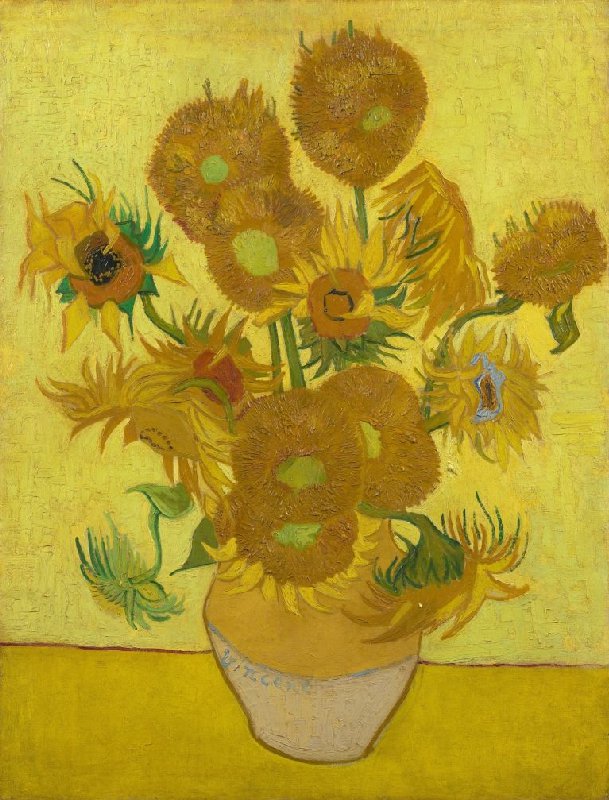
Whenever I see Van Gogh’s “Sunflowers,” I feel a sense of warmth and happiness. The bright yellows and golds remind me of a sunny summer day full of life and beauty. The flowers stand tall and proud in their vase, providing comfort and joy.
The painting represents hope, strength, and the little things in life that bring us pleasure. Van Gogh’s talent for making the ordinary extraordinary leaves me in awe every time I look at it, feeling admiration and delight.
Self Portrait (Grey Felt Hat)
This self-portrait was created by Van Gogh during the winter of 1887-1888, after spending nearly two years in Paris. Apparently, he studied the Pointillist technique and put his own spin on it. He strategically placed short paint stripes in varying directions, creating a halo effect around his head.
This painting also showcases Van Gogh’s bold use of colour in his Parisian experiments. He utilised complementary colours, such as blue and orange in the background and red and green in the beard and eyes, with long brushstrokes.
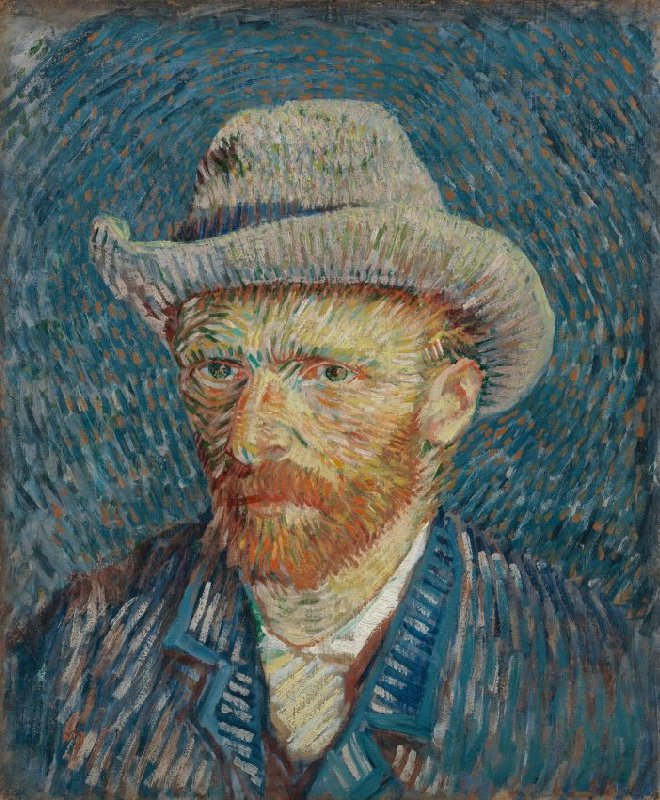
As I look at Van Gogh’s “Self-Portrait with Grey Felt Hat,” I cannot help but feel a sense of connection with the artist. His piercing gaze, the swirls of vibrant colour, and the bold strokes create a striking image that seems to capture his fiery spirit and complex emotions.
The painting, for me, is a window into Van Gogh’s world, an invitation to understand his struggles and admire his resilience. It’s like meeting the artist himself in an intimate setting, making the experience both humbling and incredibly enriching.
Almond Blossom
Van Gogh’s love for painting large blossom branches against a blue sky is evident in his use of almond trees as a subject. Heavily influenced by Japanese printmaking, he used bold outlines and positioned the tree prominently in the image.
He painted this piece as a gift for his brother Theo to celebrate the birth of their son, Vincent Willem. This painting held a special place in the Van Gogh family’s hearts, and Vincent Willem went on to establish the Van Gogh Museum.
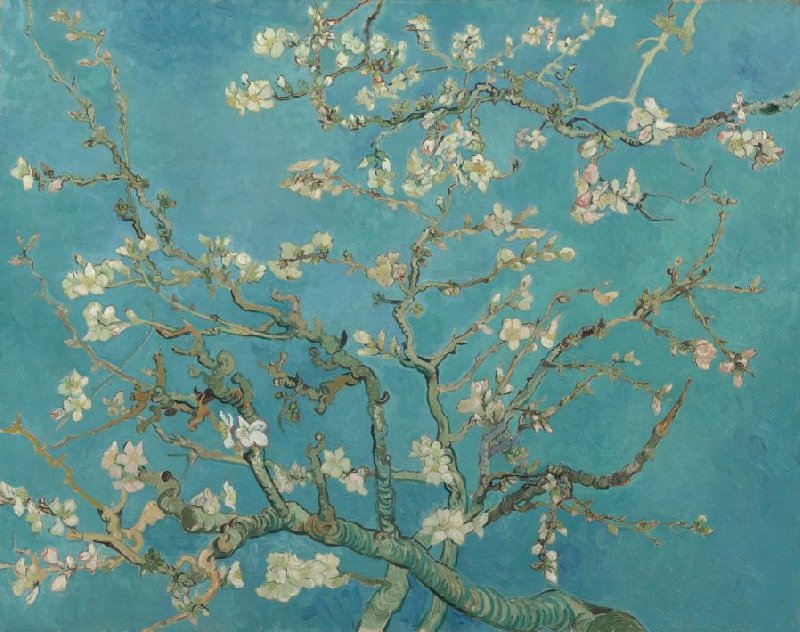
Van Gogh’s “Almond Blossom” painting emits a calm and positive vibe. The exquisite flower buds, in contrast to the cloudless blue sky, represent new beginnings, hope, and the cyclical beauty of nature.
I’m transported to a serene spring day and feel a sense of peace whenever I look at it. This painting reminds me of how nature constantly renews itself and the assurance of better days, leaving me feeling optimistic.
It’s Van Gogh’s homage to the strength of life and an ode to its vulnerable yet timeless elegance.
The Bedroom
Van Gogh’s “The Bedroom” is a peaceful portrait of his room in Arles. The vibrant colours have faded over time, causing the once-purple walls to appear blue. The distorted angle of the back wall was intentional and the perspective was deliberately flattened to resemble a Japanese print.
Van Gogh loved this painting and was most satisfied with it when he revisited his canvases after falling ill.
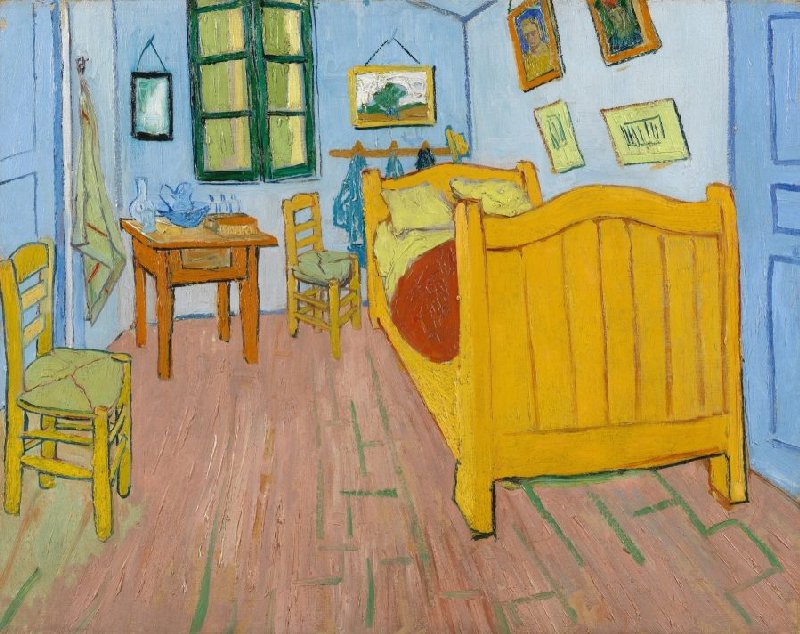
Van Gogh’s “The Bedroom” draws me in with its warm, inviting colours and familiar domestic setting. It feels like a refuge, a private world filled with personal belongings and a sense of tranquillity.
Yet, the off-kilter perspective and intense hues hint at a deeper emotional complexity. I find myself contemplating Van Gogh’s feelings of solitude or longing for home. It’s like stepping into a visual diary entry, a rare glimpse into Van Gogh’s inner sanctuary.
This painting evokes a feeling of connection and empathy towards the artist, while also highlighting the emotional depths that can be found within ordinary spaces.
Self-Portrait with Pipe
During his time in Paris, Vincent Van Gogh created over 20 self-portraits, each one unique in its expression, colour, and shape. Through these portraits, he explored different styles of portraiture.
While in Paris, Van Gogh was introduced to the works of Adolphe Monticelli, a famous French painter known for his vibrant colour schemes and use of thick paint. Van Gogh greatly admired Monticelli’s techniques and incorporated them into his self-portraits.
He experimented with colour and light, using pale hues for his face and a dark red backdrop to create a striking contrast.
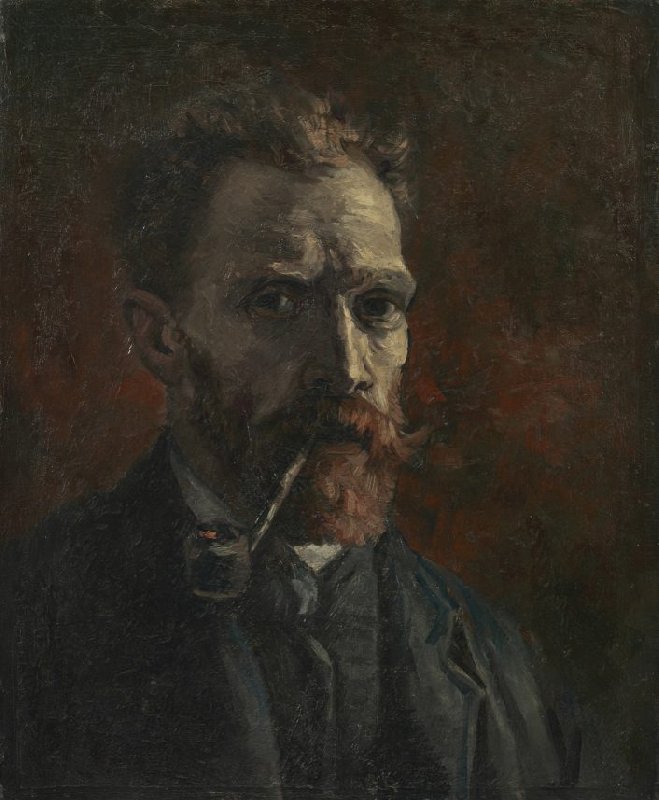
Van Gogh’s “Self-Portrait with Pipe” evokes a sense of peaceful reflection. The soft colours and focused stare create a personal moment with a hint of sadness and contemplation. It’s a beautiful reminder of the importance of self-reflection.
Irises
Van Gogh painted the “Irises” while staying at a psychiatric hospital in Saint-Rémy. He was interested in experimenting with colour and used a bold contrast of colours in this still life.
The purple flowers were placed against a yellow background to make them more visually appealing. It’s interesting to note that the irises were originally purple but have faded to blue because of the deterioration of the red pigment.
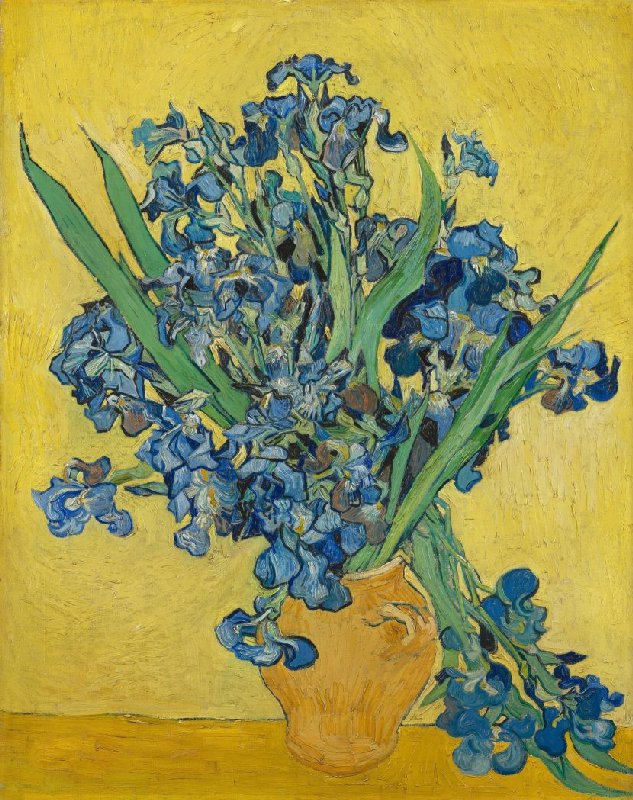
Vincent van Gogh – Irises
Van Gogh’s “Irises” is a mesmerising masterpiece that fills me with joy. The vibrant colours of blues, greens, and a single white iris blend together beautifully, creating a unique and individual scene.
The irises dance in the breeze, giving the painting a lively energy. It feels like I am being transported into a magical and flourishing garden. Despite knowing that Van Gogh painted this artwork while in an asylum, it still evokes a sense of wonder and awe at the beauty of nature.
This painting is a testament to the artist’s ability to find light in the darkest of places.
The Yellow House (The Street)
In May 1888, Van Gogh took up residence in a house at Place Lamartine in Arles, Southern France, as depicted by the green shutters in his painting. After moving into the “Yellow House”, he wrote to his brother Theo about the vibrant yellow houses under the sun and the fresh blue sky.
Van Gogh titled the work “The Street” and captured his immediate surroundings, including a favoured restaurant and his friend Joseph Roulin’s house. The Yellow House was more than just a home to Van Gogh; it was a space where he envisioned artists could live and collaborate.
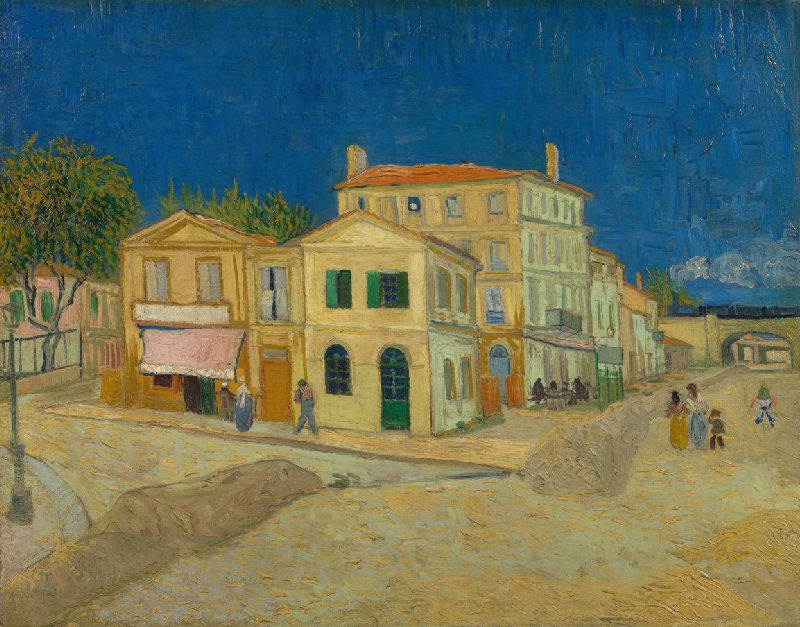
“The Yellow House (The Street)” by Van Gogh draws me in with its warmth and familiar charm. The brightly coloured houses, set against a sky of pristine blue, instil a sense of calm and tranquillity.
It feels like a sunny afternoon in a friendly neighbourhood, inviting me to be a part of this serene world.
Knowing this was Van Gogh’s home, where he dreamed of creating an artists’ commune, makes it even more meaningful. It’s not just a painting but a dream captured in vibrant colours – a reminder of the importance of having a place to belong and of shared creative aspirations.
Wheatfield under Thunderclouds
In the last few weeks of his life, Van Gogh created numerous magnificent paintings that portrayed the wheatfields of Auvers. Among these artworks is a remarkable piece that shows an extensive field below a stormy sky. Through these landscapes, Van Gogh conveyed his sadness and extreme loneliness while capturing the positive feelings he derived from nature.
In a letter to his brother Theo, he expressed his hope that these paintings would reveal the healthy and fortifying aspects of the countryside that words could not describe.
“Wheatfield under Thunderclouds” has an unusual elongated layout that emphasises the vastness of the landscape, with a simple composition of two horizontal planes.
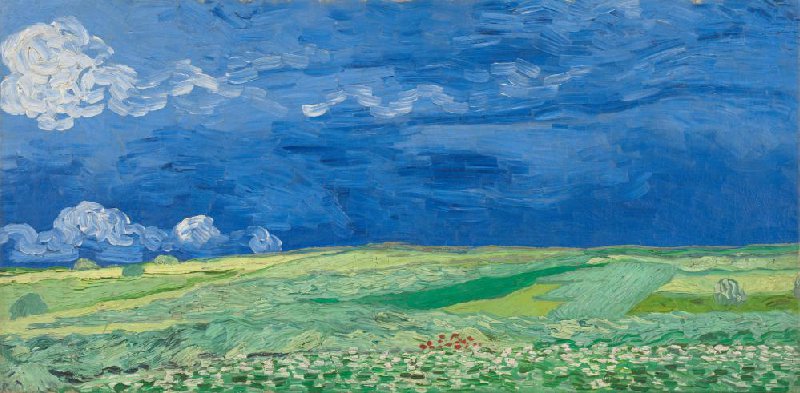
Wheatfield under Thunderclouds” by Van Gogh invokes a deep sense of solemn tranquillity within me. The vast expanse of wheat stretching under the heavy, brooding sky encapsulates a sombre beauty, portraying a sense of isolation yet resilience in the face of nature’s power.
Despite the storm looming overhead, the golden wheat fields emanate an enduring sense of hope and perseverance.
It’s almost as if Van Gogh is telling us that there’s beauty and strength to be found even in our loneliest and most challenging moments, a message that resonates deeply with me.
To find out more how to visit the Van Gogh Museum, please see the following post.
The Van Gogh Museum in Amsterdam
The beginning is perhaps more difficult than anything else, but keep heart, it will turn out all right.
~Vincent van Gogh



